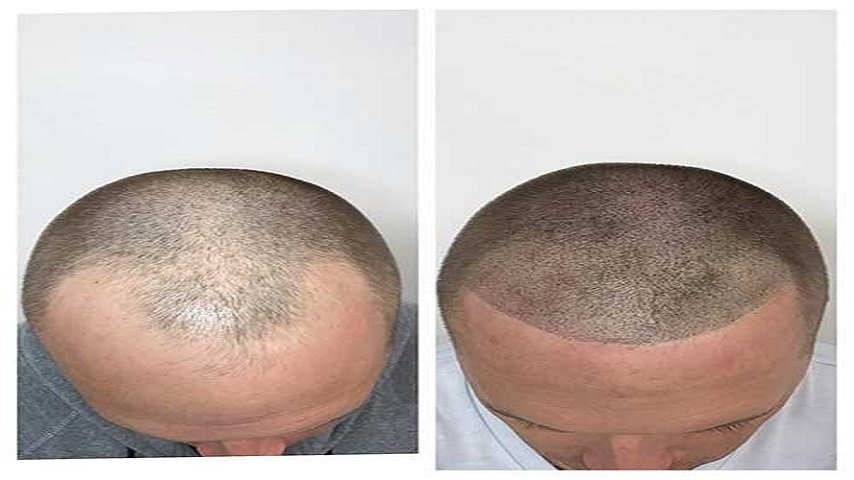Hair loss is a deeply personal experience, affecting not just appearance but also self-esteem and confidence. While various treatments exist to manage thinning hair, sometimes the most effective and lasting solution is a hair transplant. But how do you know when it’s the right time to consider it?
This guide breaks down the key facts, considerations, and expert insights on when men and women should think about a hair transplant — and why timing plays such a crucial role.
Understanding Hair Transplant: What It Involves
A hair transplant is a surgical procedure that moves healthy hair follicles from one part of the scalp (usually the back or sides) to areas with thinning or no hair. The two most common techniques are:
- FUE (Follicular Unit Extraction): Individual follicles are extracted and implanted one by one. Minimally invasive with no stitches.
- FUT (Follicular Unit Transplantation): A strip of scalp is removed from the donor area, and hair follicles are extracted from this strip and transplanted.
Both methods are designed to provide natural-looking, permanent results — but only when the time is right and expectations are realistic.
When Is the Right Time to Consider a Hair Transplant?
Timing is everything when it comes to hair transplants. Below are factors and scenarios that help determine the right time for both men and women.
- When Hair Loss Has Stabilized
Hair transplant is most successful when hair loss has stopped or significantly slowed. Transplanting too early — while hair is still actively thinning — can lead to patchy results and the need for multiple future surgeries.
- Men: Typically after the age of 25, when male pattern baldness starts to stabilize.
- Women: After the root cause (e.g., hormonal imbalance, stress, thyroid issues) has been addressed.
- When Non-Surgical Treatments No Longer Work
Before opting for surgery, dermatologists and trichologists often recommend trying non-invasive treatments such as:
- PRP (Platelet-Rich Plasma)
- Minoxidil or Finasteride (for men)
- Low-Level Laser Therapy
- Nutritional support
If these treatments fail to slow hair loss or restore density, a hair transplant may be the logical next step.
- When Hair Loss Is Affecting Confidence or Quality of Life
For many people, hair loss is more than cosmetic — it impacts social interactions, self-image, and mental health. If your confidence is consistently affected by visible hair loss, and you’re medically eligible, a transplant could significantly improve your quality of life.
- When There Is a Good Donor Area
The success of a hair transplant largely depends on the availability of healthy donor hair — usually from the back or sides of the scalp.
If you have:
- Dense, strong hair in the donor area
- No significant scarring or scalp infections
Then you may be an ideal candidate for transplantation.
- After Medical Causes Have Been Treated
It’s essential to address any underlying medical issues before considering surgery. Conditions like:
- Telogen Effluvium
- Alopecia Areata
- Polycystic Ovary Syndrome (PCOS)
- Iron deficiency or thyroid disorders
must be diagnosed and treated first. Once hair loss stabilizes post-treatment, transplant evaluation can begin.
Differences in Timing: Men vs. Women
- Men typically consider transplants between the ages of 25 and 45. Earlier than 25, hair loss is often still evolving.
- Women may consider it slightly later, often between 30 and 50, especially once hormonal and nutritional factors are ruled out.
Women are usually better candidates for diffuse thinning correction, whereas men often seek transplants for receding hairlines, crown thinning, or bald patches.
Who Should Wait or Avoid a Hair Transplant?
Not everyone is an ideal candidate. You may need to delay or avoid a transplant if:
- You’re under 25 with active hair loss
- You have unrealistic expectations (e.g., a teenage hairline)
- Your hair loss is caused by untreated medical issues
- You have poor donor hair availability
- You are in poor general health or have a bleeding disorder
A detailed consultation with a certified hair transplant surgeon or trichologist is necessary to assess eligibility.
What Are the Long-Term Expectations?
A hair transplant offers permanent, natural-looking results, but it’s not a one-time miracle cure for all. You may still require:
- Maintenance treatments (like PRP or medications)
- Lifestyle adjustments (stress management, nutrition)
- Follow-up sessions in case of progressive loss elsewhere
Setting realistic goals and choosing the right clinic or expert is key to long-term satisfaction.
Final Thoughts
A hair transplant can be a life-changing solution — but only when done at the right time and under the right guidance. Both men and women should first explore non-surgical options, rule out medical conditions, and wait until their hair loss pattern is clear and stable.
The best results come not from rushing into surgery but from a well-timed, personalized treatment plan led by experienced professionals.




Leave a Reply